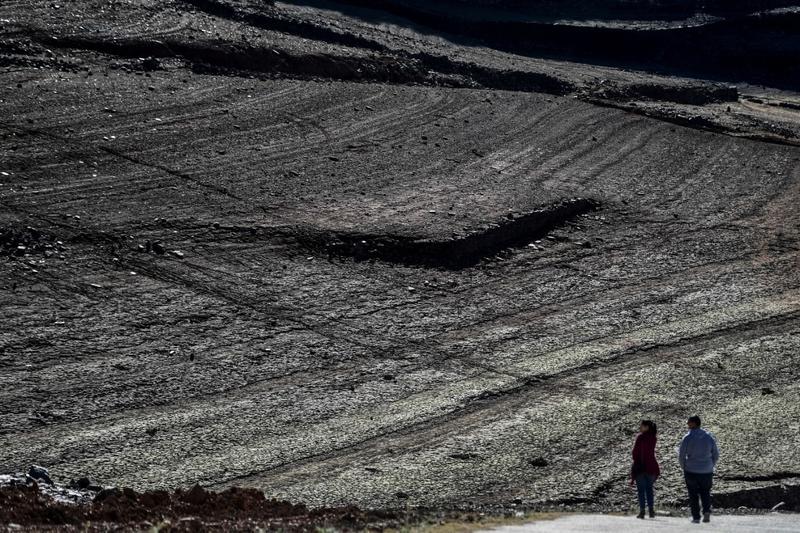 In this Feb 8, 2022 photo, a couple stands where the water level used to reach, at Vilar, on the shores of the Zezere river in Pampilhosa da Serra, central Portugal. Since the beginning of the year, it is no longer just the center and south of Portugal that are hit by drought, as has already happened in recent years, but the whole country with 45 percent of the territory is in a "severe" or "extreme" drought situation, according to the January bulletin from the Portuguese Institute of the Sea and Atmosphere. (PATRICIA DE MELO MOREIRA / AFP)
In this Feb 8, 2022 photo, a couple stands where the water level used to reach, at Vilar, on the shores of the Zezere river in Pampilhosa da Serra, central Portugal. Since the beginning of the year, it is no longer just the center and south of Portugal that are hit by drought, as has already happened in recent years, but the whole country with 45 percent of the territory is in a "severe" or "extreme" drought situation, according to the January bulletin from the Portuguese Institute of the Sea and Atmosphere. (PATRICIA DE MELO MOREIRA / AFP)
UNITED NATIONS – Up to 40 percent of Earth's land is degraded, which threatens roughly half of the global gross domestic product, or $44 trillion, according to a UN report.
If current practices continue through 2050, there could be an additional degradation of an area almost the size of South America, warns the UN Convention to Combat Desertification (UNCCD) report, which was released on Wednesday.
READ MORE: Over 100 global leaders pledge to end deforestation by 2030
The report, "Global Land Outlook 2," also makes recommendations for decision-makers on ways to invest in land restoration, climate change mitigation and poverty reduction.
If current practices continue through 2050, there could be an additional degradation of an area almost the size of South America
UN Convention to Combat Desertification
It gives both stark warnings and hundreds of practical ways to affect local, national and regional ecosystem restoration. It shows how restoring land means restoring life, economies, communities, climate, health and more.
Five years in development, with 21 partner organizations and more than 1,000 references and 250-plus global case examples, the report is the most comprehensive consolidation of information on the topic ever assembled, the UNCCD said.
The study was released ahead of the 15th session of the Conference of Parties to the UN Convention to Combat Desertification on May 9-20 in Abidjan, Cote d'Ivoire.
ALSO READ: World can learn from Chinese afforestation
The UNCCD described land degradation as the persistent or long-term loss of land-based natural capital. It gives rise to poverty, hunger, and environmental pollution while making communities more vulnerable to disease and disasters like drought, floods, or wildfires.



